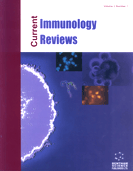Abstract
With research continuing apace, significant bidirectional interdependence between the immune system and the central nervous system (CNS) has been demonstrated, with the intervention of common messengers, cofactors and biological response modifiers. Cytokines, or biologic response modifiers, peptide hormones and neurotransmitters, as well as their receptors/ligands, are endogenous to the brain, endocrine and immune systems. These shared ligands and receptors are used as a common chemical language for communication within and between the immune and neuroendocrine systems. Such communication suggests an immunoregulatory role for the brain, on one hand, and a sensory function for the immune system, on the other hand. Furthermore, interplay between the immune, nervous and endocrine systems, so commonly known as the ‘trio’ complex, is most commonly associated with the pronounced effects of stress and stress-related conditions on immunity. The cytokines and related cofactors of the immune system are thus capable of modulating responses and certain processes in the CNS, while neuropeptides and neurotransmitters can exert their effects over cellular groups in the immune system. One way in the neuroimmunological system is controlled by the hypothalamic-pituitary-adrenals (HPA)-axis, a major coordinator and regulator of interaction among the immune, CNS and endocrine systems. The HPA axis is, therefore, the key player in stress responses; it is well established that both external and internal stressors activate the HPA axis. Cytokines, or immunotransmitters, are those chemical messengers that stimulate the HPA axis when the body is under stress or experiencing an infection. Neuroimmune interactions are essential to unravel vital communications between the immune and nervous systems in such a manner this crosstalk remains a cornerstone in maintaining and perpetuating a stance of homeostasis. It is the subject of this synopsis to tackle the issue of neuroimmune interactions, their pathways and mechanisms of action, and their relevance to physiologic and pathophysiologic arenas.
Keywords: Brain, CNS, cytokine, HPA, inflammation, neuroimmunology, neuropeptide, neurotransmitters, oxidative stress, transcription
 5
5

